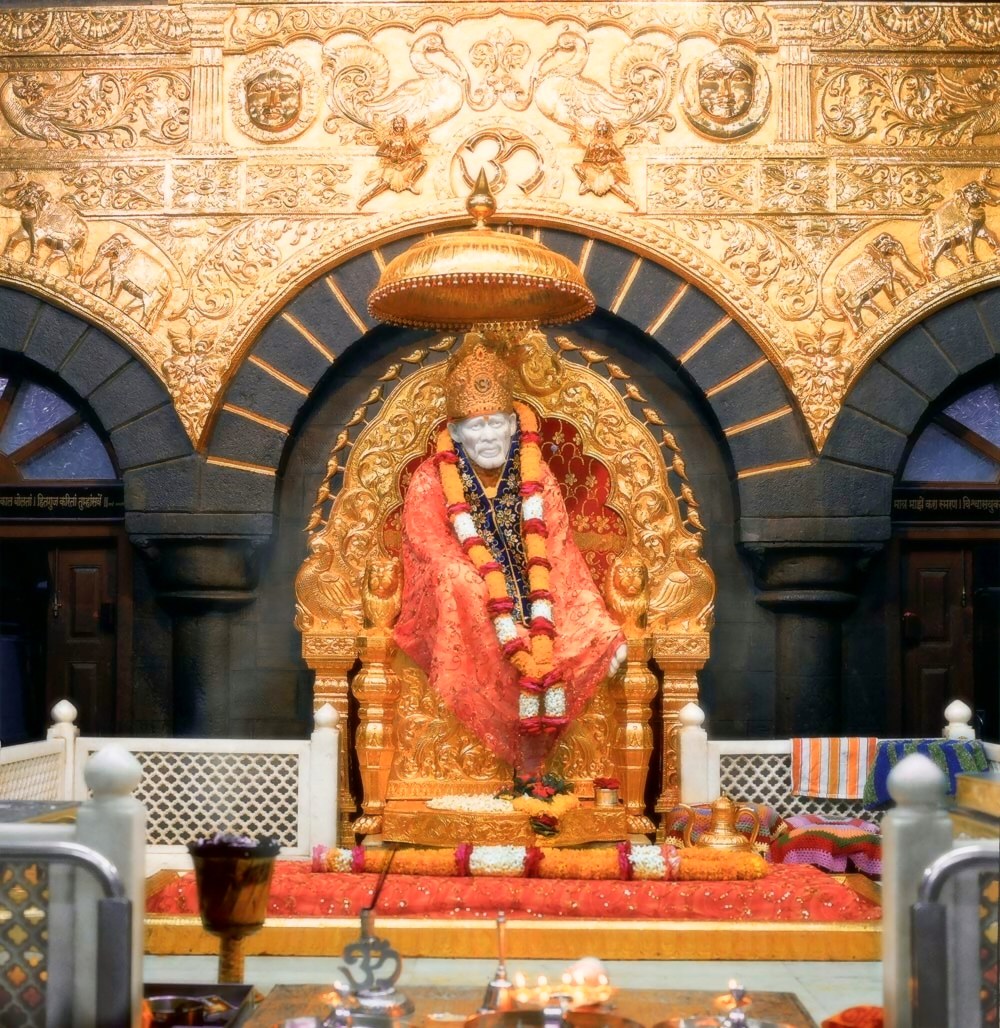HAMPSHIRE — Shirdi Sai Temple has been a place of prayer for over 140 years.
Shirdi Sai Temple is celebrating its 10th anniversary in Hampshire this year. Its members are also in the process of repairing and restoring the building.
The temple has 500 to 600 members who follow the Hindu faith, according to Mukund Raj, the temple’s primary volunteer. Hindus from around the world come to pray at the temple.
The temple is part of Shirdi Sai congregations worldwide functioning under the spiritual guidance of Dr. C.B. Satpathy who is currently leading the Global Sai movement.
The temple is devoted to Shirdi Sai Baba, a spiritual master who lived in Shirdi, India, between 1838 and 1918. One of the reasons Hindu followers chose to move into the former church building is because it was built during Shirdi Sai Baba’s lifetime in India.
Respect for all
Another reason is that Hinduism teaches tolerance of all religions.
“This building is sacred because people have been gathering here for many years to pray,” Mukund Raj said.
“Hinduism respects and accepts spiritual masters of all religions. Jesus is just as important as Baba. Jesus came to give the message of love thy neighbor. Baba had the same message. Spiritual masters come to evolve human society to the next level. They serve as a guide. Their lives are a model for us to follow.”
“The Hindu religion is over 5,000 years old,” Mukund Raj added. “It is practiced by over 1 billion people. Scriptures of Hindu faith come from the ancient texts known as the four Vedas. Hinduism believes that the soul of a person never dies. It is on a journey. Salvation is attained after this life or after many lives. Salvation comes at the completion of the journey.”
The temple holds four services every day at 7:15 a.m., noon, 6 and 9 p.m. Holy bathing is regularly held at 8 a.m.
The temple will hold a celebration known as Ramnavami, the birthday of Lord Rama, on April 8 to 10.
In addition to providing a place of worship, Mukund Raj said the temple helps its members plan for a pilgrimage to Shirdi.
“We also work with the Illinois food banks to provide food for the needy,” Mukund Raj said. “We work with families facing cancer and provide support for other people with special needs. These are the ones we can best help. We give back to the community.”
Restoration
The temple today blends both the stained glass windows of the building’s past with images of Baba and people associated with Baba. There are rooms designed for prayer such as the Gurusthan and Chavadi in the building’s lower level.
In the temple’s main prayer hall where devotees can pray before an image of Baba, shoes must be removed because it is a sacred place. Mobile devices, food and drink are not allowed. Photographs can only be taken with prior permission.
Gen-Ex (General Exterior Construction) of McHenry, which is co-owned by David Johnson and Paul Antonou, was hired to restore the temple’s exterior. Scaffolding from Service One Access of Chicago was used so the steeple could be repaired.
Johnson said that one of the projects completed by Gen-Ex was restoring the house in Woodstock that was featured as a bed and breakfast in the movie “Groundhog Day.”
Johnson said special considerations had to be taken in restoring the temple due to the building’s religious and historical significance.
“We tore off the existing aluminum siding and replaced it with high tech, water-resistant Smart Board that looks like wood,” Johnson said. “We were going to use vinyl, but we switched to Smart Board because of the building’s historical designation. We replaced the 50-year-old roof. We tore off all of the existing gutters and replaced them with new gutters. We installed new copperwork ornamentation at the top of the steeple. This has been an exciting job. We have not done a lot of steeples.”
Building history
The building was originally constructed by Presbyterians from Scotland, but they never used it.
After they went through a difficult time while trying to make a living from farming in the Hampshire area, many of the Scottish immigrants sold their farms to German immigrants who achieved more success with the land.
According to the Rev. Gerhard Mau of St. Peter’s Evangelical Lutheran Church in Hampshire, the Lutherans in the area in 1873 asked for permission to use the building for worship. Pastor H.F. Fruechtenicht of St. John’s Lutheran Church in Elgin conducted services every third Sunday afternoon. In 1884, the congregation of St. Peter’s became official.
“In 1888, St. Peter’s called their first resident pastor, Rev. Otto Gruner,” said Mau. “In the same year, the congregation purchased the church building from the Presbyterians for $775. The offer was accepted on the condition that any members of the church at the time of sale would be able to have their funeral in the church with their own pastors officiating.”
For many years, services were conducted in German. Official records were written in the old German script. The steeple was added to the church in 1899.
“In 1938, the congregation voted to conduct most of the church services in English and hold one German service a month,” Mau said. “German services were discontinued in 1942.”
In 1988, the St. Peter’s congregation purchased 15 acres for a new church site. The first worship service in the new church was held in 1994. The oak cross from the original church was hung on the front wall of the new chancel while the congregation sang “Lift High the Cross.” The congregation opened St. Peter’s Little Saints Preschool in 1996.
Today, Shirdi Sai Temple and St. Peter’s Evangelical Lutheran Church are both located along Plank Road only a quarter mile apart from each other.






